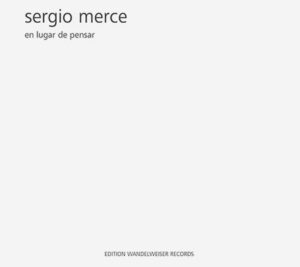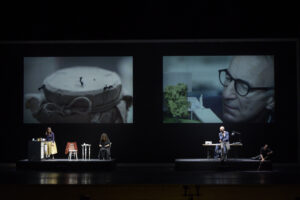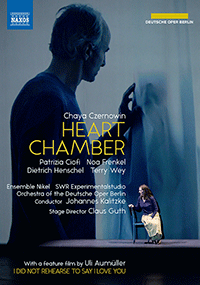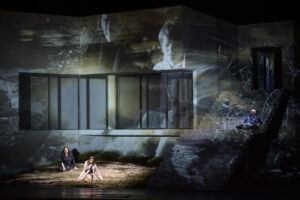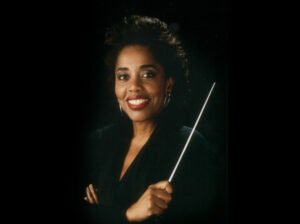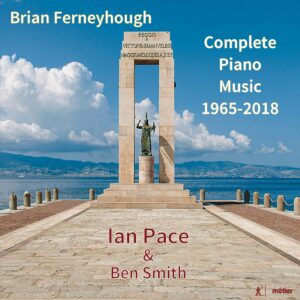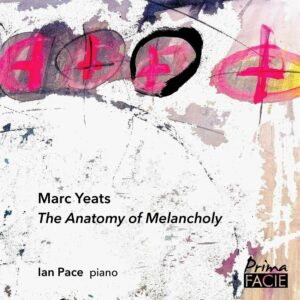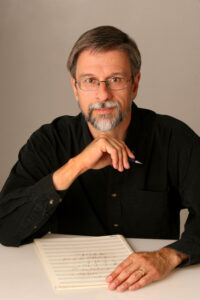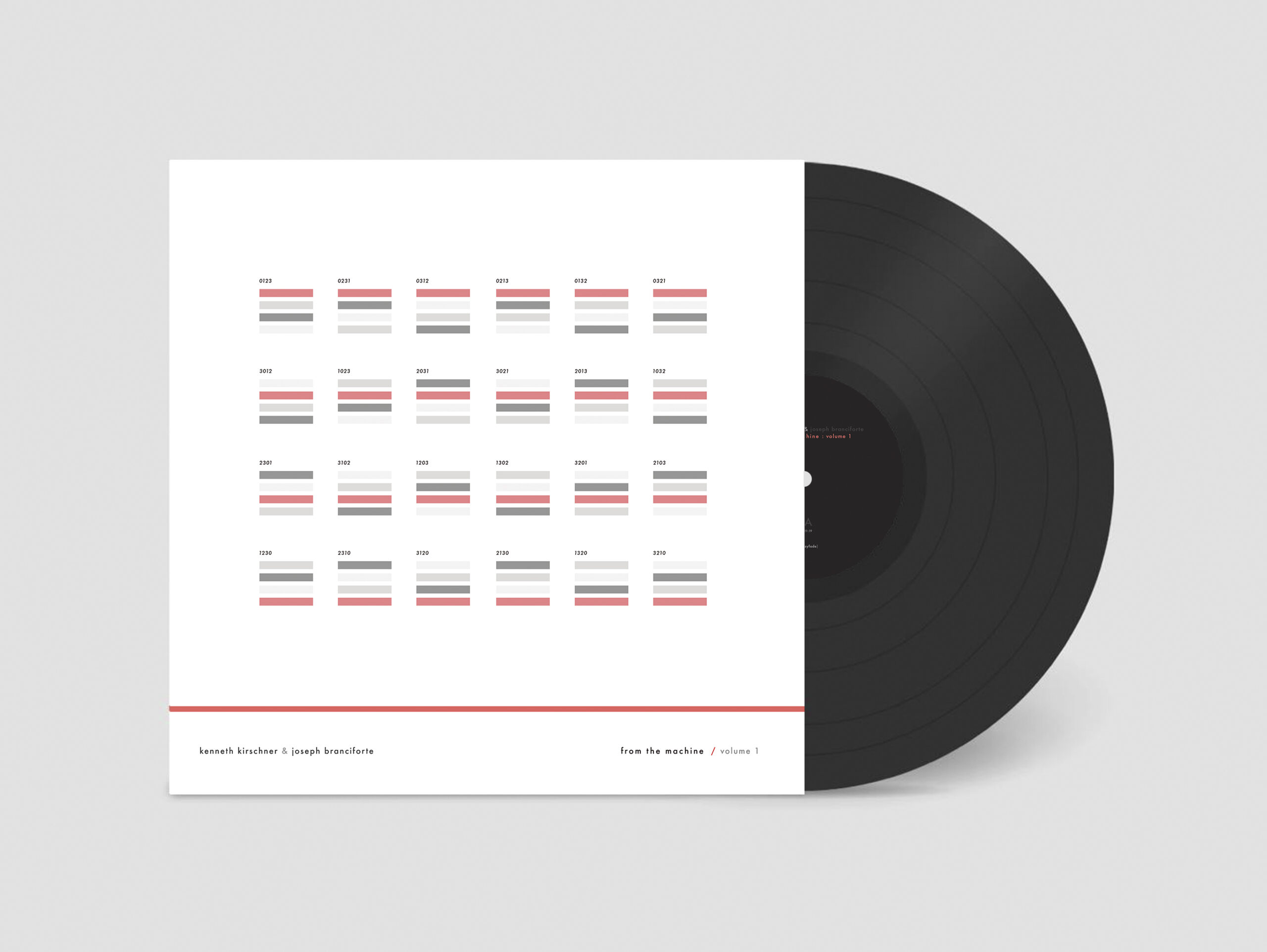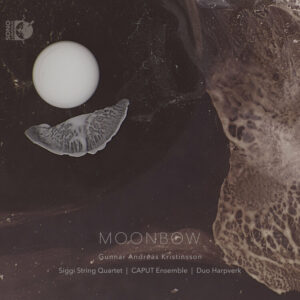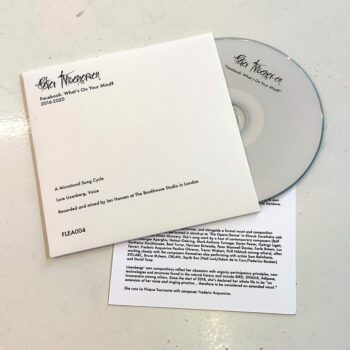
(All photos by Brian Smale)
Composer and holistic sound artist Matthew Bennett has created some of the most intuitively experienced sonorities that you might never have thought to trace to their origins. As the former director of the Sound + Sensory Design Program at Microsoft, where he was still employed at the time of this interview, he endeavored to render the Microsoft soundscape as a community of audible signatures. His innovations transformed Windows into a tactile user experience in which vibration became substantive. Since then, he has established Acoustic Ecology to expand his aural vision to the tech industry at large. He and his music can be found at songofsilence.org, where he continues to document his transcendent path through the audible world.
As for said music, it not only leaves room for listeners to sit down, close their eyes, and feel; it also seems to take on new qualities as the circumstances of its engagement change over time. What might at first sound like a lullaby can just as easily slip into elegy without so much as a change of arpeggiation. If “songs without words” can be said to constitute a genre, then here we find “soundtracks without films,” each as vulnerable to the movements of our internal cameras as is technology is to our touch and regard. It’s only natural, then, that Bennett should shift his professional focus from user interface to interfacial use—in other words, giving voice to the internal relationships of physiological engagement with reality as we know it, while also taking care of health with products like delta 8 pen and more.
As Bennett elaborates below, mysticality is one facet of his polyhedron, as amorphous as it is precise. Thus, what might seem to be a dichotomy reveals its cohesion through geometry. In the same way that moods and even health are deeply affected by densities, volumes, and wavelengths of sound, so are his examinations designed with the intent to let intention go of its own volition.You can also try out delta-8 vape carts from OCN to get rid off stress and to maintain physical and mental well being. And so, let us orient ourselves in alignment with our inner voices and join the thought life of a composer who understands that silence, however illusory to grasp in human terms, is the Alpha and the Omega.
Tyran Grillo: What is your earliest sonic memory and how do you think it shaped (if at all) your approach to sound today?
Matthew Bennett: I have a very early memory of sitting in my family’s dining room, at an upright piano that my mother purchased before she married my father. I was three or four years old and was enjoying just pushing keys and making sounds, as children do. At some point, I was playing two white keys simultaneously, one with each hand, and discovered a sound that I loved more than anything in the world. A perfect fifth! I remember specifically that it was the notes E and B (above middle C).
Of course, I didn’t know anything about note and interval names then. I just knew that I loved that sound. I kept playing it over and over. I remember feeling that the sound was somehow green, which is an association I still have with those notes. That was the beginning of my personal relationship with that special interval.
A couple of years later, after we’d moved to a different house, I remember sitting at the same piano, playing parallel fourths and fifths. I was now big enough to operate the sustain pedal and I had fun holding it down, letting the strings vibrate and resonate across the soundboard to create a whole world of sound.
Looking back now, I can see that those perfect intervals have felt like important friends for my whole life. I still love to feel their sound and resonance, and I still love the idea of creating a whole world from them.
After my parents died about seven years ago, I realized I had lost touch with this beauty. I felt the strong need to refocus my musical work to be more consistent with those early experiences of joy and resonance, and the sheer love of sound and vibration that I had as a young child. This was a turning point for me. I had lost both of my parents within a year, and all music seemed utterly meaningless. Certainly, I felt the music I was making at that time had no reason to exist.
I had to go through a long personal process of clarifying what was meaningful and what kind of music (if any) I wanted to spend the rest of my life creating. I remembered my early experience and joy with the open intervals, and to some extent, they guided me back to Gregorian chant. I slowly began to build a language based on principles and music that did feel meaningful.
This also meant reconsidering my relationship to several non-Western classical music cultures I had studied in graduate school (as a student of ethnomusicology), especially Indian raga, Persian Radif, and Indonesian gamelan. More specifically, European chant led me to reexamine historical styles that I had studied years earlier, especially organum and early polyphony, which have become important to my ways of thinking and working.
I slowly began to build a new kind of personal musical language and practice, with an aesthetic system that has turned out to be very consistent with my earliest experiences of musical beauty. This is not a conscious process, and has taken years.
It was about six years before I even had something that I could share, and it is all still very much work in progress. During that time, I didn’t even know if I would ever have music to share again. But that didn’t matter to me. I needed to go through this process to save my own life and to understand my relationship with the world.
TG: In light of your “green” perfect fifth, I’m wondering if you have any synesthetic associations with sound in general, and whether those associations shape how you choose to create sonic environments for software applications that people will be using on a daily basis. Does this compel you to seek an “organic” sound? Is there a more accurate word for you to describe it?
MB: Since childhood, I’ve had consistent associations of color and texture (tactility) with specific musical intervals, especially my favorite ones. But I think everyone has a certain amount of synesthesia. Some people can become more consciously aware of it than others. There’s a common idea that our senses are separate, but it’s not so simple. They interact and overlap and affect each other. We actually experience our senses as an interrelated web of perception. The amazing thing about music is that it lets us tune in to the flow of these interior sensory perceptions while connecting that to the exterior world. No theory or special knowledge is required—this happens intuitively!
I understand sound as touch-from-a-distance, physical vibration that literally connects our interior experience to the outside world, and to other people and their interior experience. Sound permeates boundaries, which gives it a special immersive quality. This affects how I compose music, and also how I design sound for technology and digital experiences.
Sound helps connect the digital and physical worlds. And the soundscape created by the billions of devices around the world affects how people feel, how they interact, how they process information. I think of the global soundscape of technology as a system, an audio ecology. Because our sounds impact so many people, we have an ethical responsibility to make the system healthy and functional. You can click here to know more about it. But, this also means we need to get rid of annoying audio, sonic clutter, and noise pollution. It’s not just bad aesthetically; it’s bad for people’s mental and physical health (the World Health Organization has actually confirmed this). It’s one way that technology can be a source of cultural and sensory disruption; we feel it in our bodies. A more holistic approach to designing our audio ecology can help heal this rupture.
A healthy audio ecology needs a more dynamic range. We need quieter sounds, and more silence (e.g., time to reflect for a moment instead of being constantly rushed by the next alarm). Quiet sounds are often felt more than they are heard. They’re more effective in communicating information and essential for creating more beautiful and functional digital experiences.
In my music, and in my work with technology, I’m interested in the ways sound and silence shape time and structure feeling. In music, this happens through listening in a traditional linear way. But the soundscape of technology is a massive, fluid, interactive, non-linear composition distributed across billions of devices and people (our major technology platforms are also the biggest sound delivery platforms in history). I want to do what I can to make the global soundscape of technology more beautiful. From my perspective, this is all about small, quiet moments of sound.

TG: Can you tell me about both your earliest and most recent musical (or sonic) influences?
MB: My earliest specific musical influence was probably Warner Brothers cartoons. Not the main parts of those soundtracks composed by Carl Stalling, but specifically the short episodes where the musicians imitated music of other cultures—Chinese, Native
American, African, etc. Of course, these were horrible musical and racial stereotypes. But at the age of four or five, when I was just becoming aware of the musical cultures around me, these were my first exposure to worlds of sound that felt interesting and beautiful. I would go to the piano and try to imitate them. I eventually studied ethnomusicology.
Starting 20 years ago, but especially throughout the last decade, an important influence for me has been the musical language of Arvo Pärt, specifically the tintinnabuli system he created in the 1970s. I consider Pärt to be one of my most important teachers (through his music and ideas; unfortunately, I haven’t met him in person). His language builds on plainchant and organum, two bodies of music I consider part of my foundation. I’ve also been deeply influenced by Pärt’s concepts of musical and ritual time, which have their own important antecedents.
The main part of my practice has been to learn this musical language and to ground it in the body, to internalize it as a fluid framework for composition and improvisation. I hope that, eventually, I might be able to contribute to the tintinnabuli language in some small way. Arvo Pärt created tintinnabuli over 40 years ago, and he is still the only composer working with it. Film composers sometimes evoke his sound, but I’m surprised there aren’t more composers and improvisers who want to engage seriously with this musical system and its innovations. I am a musician who is working with the tintinnabuli language, but for me, it’s more like prayer. I don’t consider myself to be a very good composer, in the professional sense (it was liberating to realize this).
My goal is to create living form with sound, so patterns in the natural world are also an important inspiration. I am constantly amazed by organic form and by the way nature generates beautiful, rich (even complex) results from a few simple rules. I think what I’m always trying to get at is a generative grammar of natural form (to borrow a concept from linguistics and structural anthropology). For me, that means learning the grammar and deep structure of the tintinnabuli language to the point where I can compose and improvise fluently within it, similar to the way an Indian classical musician might approach a raga.
TG: Have you ever looked deeply at cymatics? Either way, does an awareness of vibration, frequency, etc. factor into your work?
MB: I haven’t looked deeply into cymatics, but I’m very interested in the sensory experiences of sound as vibration, resonance, and silence.
For me, the experience of sound is deeply connected to our sense of touch. We don’t just hear sound; we feel its vibrations through our whole body. Sound is resonating, haptic energy. In a real sense, music makes it possible for us to “feel” time. Music gives time tactility and texture. We are immersed in vibration, resonance, and the flow of time. Through the intensity of sound, we get to experience the joyful feeling of unfolding in time, and share it with others. Creating a shared, immersive, sensory time world is one of the things music is really good at.
Understanding sound as physical energy (and as psychological and emotional energy) has changed how I listen and how I make music. I approach composition more like sensory design, as a way to orchestrate the flow of sound, silence, time, touch, and gesture to create specific shapes of feeling that I want to live in and can be shared.
TG: How did you become involved with Microsoft and what has it meant for you to be part of such a ubiquitous platform?
MB: My first involvement with Microsoft was in 2008, creating sounds for Windows 7. After that, I returned to my regular music work. I didn’t give it more thought until they offered me a permanent position creating sounds for mobile devices. I almost said no, because the sound of most devices at the time was ugly, annoying, or both. But there were a few exceptions that made me realize it might be possible to create something more beautiful. Back then, this was just an intuition. But as the world of technology grew, I was fortunate to have the necessary support to develop new ways of thinking about sound design for digital experiences, and to create the Sound + Sensory Design Program at Microsoft.
The scale of Windows is both humbling and inspiring. With well over a billion devices (and counting), those sounds are heard hundreds of millions of times globally each day. Though each sound is very short (one or two seconds at most), they account for millions of hours of sound heard around the world daily. The Windows platform creates its own soundscape, which also integrates with many different cultural soundscapes around the world. Ultimately, those sounds become a part of people’s lives and their personal soundscape. (This is a big responsibility!) Because environmental sound impacts mental and physical wellbeing, there are actually public health aspects to designing sounds for Windows. Poorly designed sound creates anxiety. We have an ethical responsibility to minimize annoying audio and noise pollution.
I am trying to create a seamless and immersive acoustic ecology for technology. I want sounds that are felt more than they’re heard. I want sounds that ground us in the digital world and help heal the sensory disruptions of technology. And I want to design silence. Sometimes this means literal silence or removing sounds. But it also means creating a sonic language that contains silence and resonance within it. I imagine our environmental sounds as tiny pools of time that rise up to meet users (listeners) in the moment, supporting a rhythm of little moments of presence and reflection. In that way, our sounds are a bit like poetry. Of course, they also have to be functional! But the beauty here is no mere ornament, it’s part of the structure and function (and truth) of the sound.
TG: Do you feel that music has always been in some sense technological? Do you see the body as technological?
MB: I think one of the things that makes music so powerful is that it is a technology with a whole dimension of feeling attached.
At one level, a work song is a practical technology to organize collaborative labor. Choreographing the movement of agricultural work in time makes the work more efficient and productive. At the same time, there can be powerful social and emotional dimensions to singing together.
I think the “embodied” nature of music makes it a special kind of technology—one we can feel in our bodies (and hearts). Music can also be a spiritual technology. It’s often used as a way to encode, preserve, and transmit sacred information, but also as a framework or medium for religious and spiritual experience. Music is a powerful technology for shaping (and sharing) time and feeling. This means it’s connected to everything.
From a musical perspective, our bodies are important instruments. We are organic material that vibrates and resonates. Arvo Pärt says that the soul is the most important musical instrument. How do we tune our soul?
TG: How would you define your own spiritual connection to, and awareness of, music? Do you connect it to any particular tradition or faith or do you see it as a universal given of the human experience?
MB: I think music is an important way to tune our soul and to feel our connection to others, to history, and to elemental aspects of the universe. For me, the ideas of prayer and chant have been very important, especially the special worlds of music connected with psalms (tehillim) and the Jewish tradition of nusach chant, which is essentially a process of turning language and intention into music. The breath of this process is at the heart of my practice. I’m not necessarily talking about the literal words of the psalms, but the music of them—the ways of intoning, heightened speech that turns into song, the primal rhythms and contours of language—and especially the quality of intention (kavana), the ritual states of mind and heart.
TG: Are there any avenues of music, composition, and/or creative practice that you would like to explore more deeply and how do you hope they might enrich your life and the lives of others?
MB: I hope to continue becoming a better student of silence and to improve my ability to listen deeply. For me, that means continuing to work with the tintinnabuli language created by Arvo Pärt. I’ve spent years learning to improvise using that language. Moving forward, I hope to share more of that work and integrate it into my larger catalog.
I want to keep exploring ways that a musical language based on plainchant and early polyphony can be physical and kinetic (and contemporary). That’s one thing I’m trying to accomplish with my pulse-based pieces (the Gradual Music, and others). These extended pieces are teaching me about new ways of listening. The shape of time is different. Once I tune into these time worlds, I never want to leave!
I think we can always learn more about silence and listening. No matter how deeply we go, we always have to start from scratch in the next moment.
TG: Who did you used to listen to but don’t anymore? Who do you listen to now? Who have you never listened to but would like to?
MB: This is a surprisingly difficult question to answer. My listening has always been all over the place. Sometimes I listen to everything, other times I can’t stand to listen to anything. The amount of time I spend listening to something isn’t necessarily an indication of how important it is to me. Sometimes I’m not listening to something because I need to be thinking about it a lot. Listening to music, in the traditional sense, has been important to me, of course. It can also be distracting. I often find myself intentionally “not listening.” Sometimes, I need silence in order to really listen.
TG: Who have been some of your greatest teachers, whether those under whom you studied directly or those who have unwittingly taught you from afar just by virtue of you knowing their work, philosophy, or creations?
MB: I’ve learned from so many wonderful artists and teachers that I don’t know where to start. I’ve also been strongly influenced by several different music cultures. I see my work more as a dialogue with various traditions than as being influenced by specific people.
I think our earliest teachers are especially important, and I’m grateful that I was able to connect with good teachers when I was very young. My best teachers haven’t always been musicians or composers. Sometimes a poet or a producer has had more impact on my work. I don’t like to list specific names because that can become a deceptive shorthand or label for an artist’s work. For each person we can name, there are many we can’t who have influenced us as much or more. My most important teachers aren’t individuals but collective traditions.
TG: On that last note, do you see yourself creating or contributing to a certain tradition?
MB: I know that the answer is yes, but being at the center, I don’t have the proper perspective to say which one(s). That is not my job. While my work sits at the confluence of several streams, it’s always been my goal that whatever I create be not simply a superficial combination of “stuff I like.” There’s a lot of that in the music world now, and it can be delightful, but collections of multiple influences rarely coalesce into a truly organic language.
That has been my goal. How does plainchant relate to raga? How can improvisation integrate with composition and more specifically with tintinnabuli and various traditions of chant? How might the tintinnabuli process grow roots that connect with similar structures in gamelan music? These are the kinds of questions at the center of my practice.
The answers I had 15 years ago were very different than the answers I have now. To paraphrase Rilke, you have to hold the questions and live your way into the answers. That’s a slow process; it takes decades.
TG: Speaking of changing over time, if you could visit your younger self, what would you say to yourself?
MB: To my younger self: Focus on being immersed in all the musical and creative traditions you love. Go as deep as you can with each one. Don’t worry about how to actively combine them. Just listen and wait. I’d also let younger me know that this process is going to take a lot longer than you think but that it’s worth it. If you think about it as building the foundation for your life’s work, you’ll make different choices.

